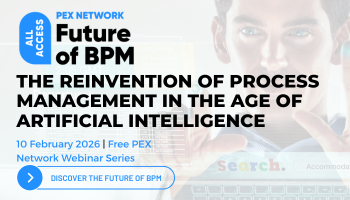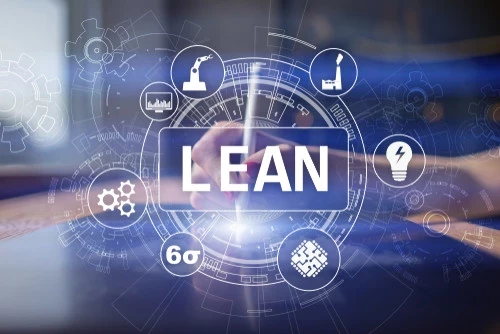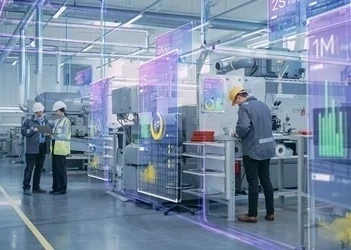Process parallelism in process mining
Exploring the important role of process parallelism in process mining
Add bookmark
Process mining analyzes, identifies, automates and monitors event logs and real-time systems data to enhance end-to-end operational business processes. Process mining is becoming essential for competitiveness across industries, helping organizations identify gaps in workflows and solve issues that could impact their performance.
There are various factors driving and shaping the modern process mining landscape as it continues to evolve into a powerful tool for businesses seeking operational excellence and competitive advantage. One that Max Smith, senior director product marketing at process mining and intelligence company iGrafx, thinks is highly important is process parallelism.
Smith was a speaker at All Access: Process Mining and Process Intelligence, the latest iteration of PEX Network’s free webinar series. We sat down with Smith to discuss the concept of process parallelism and its role in process mining.
Join the PEX Network community

Don't miss any news, updates or insider tips from PEX Network by getting them delivered to your inbox. Sign up to our newsletter and join our community of experts.
Learn MorePEX Network: What is process parallelism?
 Max Smith: As the name suggests, it’s when multiple activities in a process happen at the same time (i.e. concurrently). Let’s look at a real-life process that we’ll call “weekend chores.” Unfortunately, I imagine every reader can relate. Some of the chores have sequential steps: you can’t rake the leaves before you get the rake from the garage, but others happen concurrently as you multi-task. You might have a load of clothes in the wash and the oven preheating for meal prep while actively cleaning the bathroom.
Max Smith: As the name suggests, it’s when multiple activities in a process happen at the same time (i.e. concurrently). Let’s look at a real-life process that we’ll call “weekend chores.” Unfortunately, I imagine every reader can relate. Some of the chores have sequential steps: you can’t rake the leaves before you get the rake from the garage, but others happen concurrently as you multi-task. You might have a load of clothes in the wash and the oven preheating for meal prep while actively cleaning the bathroom.
Business processes are no different from our weekend chores process in this regard. Sequential and concurrent activities happen in sales, marketing, operations and finance processes. We’ll get to the benefits of this concept in a minute, but first it’s important to understand why this matters. Activities have a certain duration. There is nothing you can do to make the load of wash take less time to complete, but maybe you could do chores more efficiently by doing those on the same floor of the house to limit the amount of time spent moving around. In the academic sense, we’d call this intra-activity duration (how long does the task take?) versus inter-activity duration (how long between tasks?).
READ: Process mining: Driving the next wave of intelligent business transformation
PEX Network: How does parallelism play a role in process mining?
MS: Before we jump into why concurrency is important in process mining, let’s look at what’s required for concurrency to exist in process mining. All process mining algorithms require at least one timestamp per activity. For activities that are instantaneous (e.g. receiving an invoice from a vendor), this is trivial. For activities that happen over time, the timestamp is commonly the end time (e.g. the time a form is submitted rather than when it was starting to be filled out). You must have an activity’s start AND end time to capture intra-activity duration. Without this, you could never detect concurrency.
Based on these durations, you can accurately represent how processes are executed, but most process mining algorithms don’t understand concurrency, even those that recognize two timestamps per activity. Back to our weekend chores example, you’d see one variant for each permutation of activities: cooking > bathroom > wash, cooking > wash > bathroom, wash > cooking > bathroom, as well as the remaining three orderings.
Clearly this isn’t an accurate representation of the process, and that’s hugely important to deliver on process mining’s goal of objective visibility and transparency.
READ: Process mining careers: A guide to jobs, skills and training
PEX Network: What benefits does parallelism in processes mining offer?
MS: Accuracy is the first and most important benefit. You want your mined processes to be as close to reality as possible. This also makes process mining exploration more natural and understandable. If you ask someone to draw a process on a napkin or create a BPMN diagram in a modeling tool, they’re going to inherently document concurrency in the process.
The second benefit is that it makes process mining data much more manageable. As described in my last answer, we’re talking about a six-fold reduction in variants with just three concurrent activities. This expands exponentially with more concurrent activities. Fewer variants means less to analyze, more accurate bottleneck detection and, for the more advanced practitioners, a smaller statistical data set for predictive machine learning and AI algorithms to run on. When paired with the first benefit, this means more accurate results with lower compute costs and better performance.
Lastly, concurrency is crucial for conformance checking. If you’re checking actual process execution versus a defined gold standard model, they both need to describe the process the same way. As we’ve already established, process models include concurrency (e.g. parallel gateways in BPMN).
All Access: Future of BPM 2026

You asked, and we listened. Business process management (BPM) remains the cornerstone technology for driving organizational transformation, according to the survey results featured in the latest PEX Report. As we look toward 2026 and beyond, generative AI, agentic AI, and intelligent process orchestration are redefining how processes are designed, executed, and optimized. BPM is your key to adapting swiftly and effectively in this new era.
PEX Network is bringing together industry leaders, technology innovators, and thought leaders to answer your biggest questions and explore the advancements reshaping business today. And you're invited. Register for free to save your spot now!
Register Now






















